- Home
- Bill Bryson
The Road to Little Dribbling Page 27
The Road to Little Dribbling Read online
Page 27
The trespassers’ efforts were not in vain. Four years later, Parliament set up a committee to consider creating national parks across England. The Second World War intervened, but in 1951 the Peak District became England’s first national park. Considering the symbolic importance of the Mass Trespass, the memorial is modest nearly to the point of invisibility. It’s just a small plaque at the back of a car park, hanging about a dozen feet up a quarry wall and half obscured by vegetation. If I hadn’t known to look for the plaque, I never would have noticed it. The words on it say simply: ‘The mass trespass onto Kinder Scout started from this quarry, 24th April 1932.’ Across the road, a narrow lane beside a stream led up to the start of the footpath to Kinder Scout. It was a lovely day and wonderful countryside, but Kinder Scout, according to what I’d read, was a six-hour round trip on foot from here. I still had to get to Buxton, at the other end of the Peak District, where I had a room booked, so I walked for only a mile or so towards Kinder Scout, just enough to get something of a view, then turned and walked back to the car. Once again, I didn’t see a soul.
Buxton is an old spa town, mostly built of stone, mostly in the eighteenth century. The Pavilion Gardens, covering twenty-three acres in the centre of town, must be the most delightful town park in the country. Buxton has a splendid opera house, a couple of grand hotels, and an outsized building with a striking dome that was once a hospital and is now an outpost of the University of Derby. In the middle of town is a crescent vaguely reminiscent of the famous Royal Crescent at Bath, but with the difference that this one has been derelict for years since structural problems were found in it. Plans exist to turn it into a hotel, but at the time of my visit it was still boarded up and surrounded by worksite fencing – a sad fate for a Grade I listed building. The problem is that the East Midlands Development Agency, which had promised £5 million of funding, was closed by the government in 2012 before the money could be paid over. Why does this not surprise me?
I had a walk around the town, then browsed in shop windows for want of anything else to do. I particularly liked Potter’s, a nice old men’s outfitters that has been in Buxton since 1860 and looks to be still going strong, which these days seems not so much an achievement as a miracle. I was greatly taken with some shirts they had for sale, entirely because of the name: Seidensticker Splendestos. I know I am on the record as saying that I don’t need another thing, but who could resist that name? I am prepared to wear a shirt sight unseen if it’s called a Splendesto. It’s so good a name it ought to be a word in its own right, denoting a higher level of excellence beyond splendid. I even thought of a slogan for them: ‘Splendeste – when splendid isn’t good enough.’
I grew up in an age when people valued good names. It was a time when washing machines had Luxe-o-Matic spin cycles, lawn mowers had Trigger-Torque starter buttons, record players had Vibro-Sonic speakers. Even clothing was exciting. My father once owned a McGregor Glen Plaid Visa-Versa Reversible Jacket and got real pleasure from showing people, including total strangers, how you could turn it inside out and have a second, bonus jacket. ‘That’s why it’s called Visa-Versa,’ he would explain, as if revealing one of the secrets of the universe. He never called it ‘my jacket’ or ‘the jacket’. It was always ‘my Visa-Versa Reversible’. Just saying the name gave him pleasure. I understand that.
All that is gone. Nowadays we have nothing but meaningless names. Look at Starbucks and their cup sizes – Venti, Trenta and Wanko Grande or whatever. Giant corporations everywhere have names that mean nothing – Diageo, Lucent, Accenture, Aviva. I used to have an insurance policy with Windsor Life, but now the company is called ReAssure. That is a fabulous name if they ever decide to make incontinence pants for the elderly, but it is a terrible name for an insurer.
I miss having exciting product names in my life and felt a genuine pang of envy, as I stood looking in Potter’s windows, for the people who get to shop in such lovely old preserves. As I walked on, I fell into a little fantasy in which I saw myself calling in at Potter’s from time to time, for the linguistic pleasure of it as much as anything else.
‘Good afternoon,’ I say in my fantasy. ‘I special ordered a couple of Splendestos a week or two ago and I wonder if they are in yet.’
‘Let me just check the book, Mr Bryson,’ says the manager and runs a finger down the page of an enormous leather-bound ledger. ‘They should be in on Wednesday,’ he tells me.
‘And what about my Lloyd, Attree & Smith brown Donegalstyle tweed sports coat with faux suede elbow patches?’
‘Let me look. Yes, that’s due on Wednesday, too.’
‘Excellent. I’ll call back on Wednesday. For now I’ll just take these Sloggi Shur-Fit Boxer Shorts in mint green with cranberry piping.’
‘Of course. Shall I wrap them for you?’
‘No, I’ll wear them now.’
In the evening, comfortable in my new Sloggis (‘So stylish you’ll want to wear them outside your trousers’), I would stroll to a public house for an aperitif and afterwards I would dine at some nice little bistro near the gardens. That is in fact precisely what I did now, except that I wasn’t wearing Sloggi Shur-Fits outside my trousers, regrettably.
I had an excellent evening. When the waitress cleared my plate she asked me how my meal was.
‘Oh, splendesto,’ I said and meant it most sincerely.
In the morning, I woke keen and eager, for the sun was shining and I was to walk the Monsal Trail, which runs for eight and a half miles between Buxton and Bakewell, through tunnels and gorges and views of sumptuous beauty. It was originally part of the Midland Railway line from Manchester to Derby, but that closed in 1968. The route never made much economic sense since it ran through lightly populated countryside. One of its principal stations, Hassop, was built more or less for the private use of the Chatsworth estate. Today, restored as a roomy, level cycling route and footpath, it brings pleasure to far more people than ever it did when trains ran over it. It is a wonderful walk.
The moment of supreme glory is the crossing of Monsal Dale on the majestic Headstone Viaduct. Monsal Dale is a place of great natural beauty already, but the viaduct, three hundred feet long and standing high above green meadows and the little River Wye, raises it to an even more transfixing level. Famously, when the viaduct was built in 1863, the art critic John Ruskin raged against it, saying that a valley had been cruelly cleaved just so ‘every fool in Buxton can be in Bakewell in half an hour and every fool at Bakewell in Buxton’. It is often used as an example of how things that are hated when new later become treasured. Well, sure, but there is a difference here in that the Headstone Viaduct was a thing of actual beauty, carefully built. How much do you think Network Rail values beauty today? Less than not at all? Correct.
Not far from Monsal Dale is a view nearly as good as, and even more historic than, the one that so exercised Ruskin, where the trail emerges from a long tunnel into a comely valley. Holding a commanding position at the valley head is a white Georgian building that looks at first sight like a stately home. In fact, it is Cressbrook Mill, built by Richard Arkwright in 1779 (and rebuilt eight years later after a fire) to spin cotton. It is quite the most handsome factory you will ever see and possibly the most important, for it changed the world. Along with Cromford Mill, a few miles away near Matlock, this was where the factory system started. Everything that is manufactured on Earth today traces its beginnings back to this tranquil corner of rural Derbyshire. Arkwright built his mills in the narrow valleys of Derbyshire because they had plenty of water to power his machines and because the remote location made it less likely that they would be besieged by angry spinners put out of work by his new methods. It also made it easier for him to exploit his workers. Cressbrook Mill was operated mostly by orphans who were treated worse than abysmally.
Within half a century, the cotton industry employed over 400,000 people. Nearly everything that followed and made Britain great – shipbuilding, finance, the building of canals and railways,
the growth of empire – had its foundations here. It is interesting to think that Britain’s greatness was built on a product, cotton, that Britain couldn’t grow and that came from the one part of the empire it had lost and didn’t control. Derbyshire’s spell at the centre of all this didn’t last terribly long. As the cotton industry grew, larger factories and bigger rivers were required, and the work moved to more urban places like Manchester and Bradford. Derbyshire sank back into a picturesque oblivion. Today Cressbrook Mill is swanky apartments.
I finished the day in Ashbourne, another very agreeable little town, with the kinds of shops that you hardly see these days: a cheese shop, a sweet shop, a shoe repair shop, at least two butchers, a greengrocer’s, an old-fashioned toy shop, several pubs and some good-looking antiques shops. At one end of town are the Memorial Gardens, which are pleasant if nowhere near as splendid as Buxton’s Pavilion Gardens, and at the other end stands the magnificent church of St Oswald’s, with a tall, graceful spire that brings to mind Salisbury Cathedral on a slightly smaller scale.
I went in a snug-looking pub and noticed that one of the guest bitters was from the Ringwood Brewery in my part of the country.
‘They do a very nice lager, too,’ I said to the barman, just making conversation.
‘We do very nice lagers ourselves,’ he responded defensively as if I had just told him his wife was ugly.
I was taken aback. ‘I wasn’t suggesting anything about your lagers. I just thought this was a good one you might not have heard of.’
‘As I say, we have very good lagers already,’ he said icily and handed me my change.
‘And you’re a bit of a jackass,’ I thought, and went with my beer to a corner table, where I sat under a framed newspaper photograph from the time when a lorry with failed brakes had gone through the pub’s front wall. I was kind of sorry now that I had missed that.
Just before leaving home, I had stuck a bundle of forwarded correspondence from a publisher into my rucksack and I pulled it out now. When you write books for a living, you come to realize that while not all people who write to authors are strange, all people who are strange write to authors. Recently a man in Huddersfield wrote to tell me that he quite liked some of my books and thought it would be an idea if we swapped houses for a fortnight so that he could get to know me through my possessions and I could keep his tropical fish fed. ‘I haven’t told the wife yet, in anticipation of a positive reply,’ he wrote. Another wanted to do a book called The Great British Breakfast but wasn’t good at writing, so he proposed that we travel round Britain together; he would eat the breakfasts and describe them to me and I would put the experience into words. He proposed a 70:30 split of the proceeds in his favour since it was his idea and I was quite well off already. Another man wrote saying that in 1974 he was working as a bush pilot in Canada and he gave a lift from Goose Bay, Newfoundland, to Halifax, Nova Scotia, to a young man with a ginger beard. The thing he particularly remembered was that the young man was wearing a kilt, and he wondered if I’d ever worn a kilt while travelling in Newfoundland.
Occasionally the post includes some good surprises, and I was treated to one now. From a padded envelope, I pulled an advance copy of a book called Maphead by Ken Jennings, about one man’s passion for geography. It didn’t look my kind of thing at all, but I glanced through it and was immediately hooked. It was ostensibly about the joys of geography, but mostly it was about how uninformed Americans have become with respect to the world.
Jennings relates the story of an assistant professor at the University of Miami named David Helgren who had given freshman students a blank map of the world and asked them to locate thirty well-known places. He expected mixed results, but what he found was that the students mostly couldn’t do any of it. Eleven who were from Miami couldn’t even locate Miami. The Miami Herald picked up the story and then it became national news. Helgren was interviewed by lots of newspapers and film crews. And how did the University of Miami respond to this? It fired Helgren. When a colleague spoke up on Helgren’s behalf, it fired him, too.
Other findings have shown that about 10 per cent of university students can’t find California or Texas on a map and about a fifth of Americans overall can’t even find the United States on a map. How can you not find your own country on a map? Jennings quotes the response of a contestant in the Miss Teen USA competition when asked to explain why so many Americans couldn’t even find their own country on a map. With solemnity and conviction she responded:
I personally believe that U.S. Americans are unable to do so because some people out there in our nation don’t have maps, and I believe that our education like such as in South Africa and, uh, the Iraq, everywhere like such as, and I believe that they should, our education over here in the U.S. should help the U.S., uh, should help South Africa and should help the Iraq and the Asian countries so we will be able to build up our future, for our children.
Well, thank God at least we haven’t lost our articulacy. I hadn’t intended to have another pint, but I was having such a good time with the book that I went back to the bar and ordered another, so that I could read even more, though this time prudently I didn’t mention to the barman any other beers I had ever had in case he took it personally.
Returning to my book, I learned that Sarah Palin thought Africa was a country. It was a wonderful evening.
II
The British are sometimes admirably sensible. In 1980, the government established the National Heritage Memorial Fund, to provide money to save things that might otherwise be lost, but nowhere did it define what heritage was. So the trustees of the fund are free to save anything they choose as long as the money is available and they consider it as coming under the general category of heritage. You couldn’t devise a system more open to foolishness and abuse, yet it has worked brilliantly. It has helped to save everything from works of art to threatened species of birds, but I don’t think the money has ever been better spent than on saving Calke Abbey, my next port of call.
Calke Abbey has never been an abbey – the family that owned it just called it that to make it sound more interesting – but it was once a very substantial estate, spread over some thirty thousand acres in southern Derbyshire. For four hundred years it was the home of the Harpur Crewe family whose defining characteristic was ‘congenital unsociability’, as the house guidebook nicely puts it. For the last hundred and fifty years of their reign, most members of the family barely left the property or let anyone on to it. A visitors’ book from the nineteenth century was found to contain not a single entry. The first automobile wasn’t allowed up the drive until 1949 and electricity wasn’t installed until 1962.
Before the First World War, Calke employed sixty staff, but then the estate fell into decline and by the end it employed no one. When Charles Harpur Crewe died in 1981 – amazingly, not to say moronically, intestate – his brother Henry was confronted with an inheritance tax bill so large that the interest alone increased by £1,500 every day. Unable to pay, Henry gave the house to the National Trust. Brilliantly, the Trust decided to keep the house just as it found it. They call it ‘the un-stately home’, and that couldn’t be more enchantingly correct.
The property had not been improved or substantially decorated since the early 1840s. After Vauncey Harpur Crewe, the tenth baronet, died in 1924, the family retreated to one small corner of the house. When the National Trust arrived in 1985, it opened doors on rooms that hadn’t been entered in more than fifty years. The whole place was a musty time warp.
I was put on a tour with seventeen other people, and it was superb. It lasted a very generous ninety minutes and was led by a well-spoken, good-natured, well-informed lady. The Trust has done a superb job of halting the deterioration without losing an air of neglect and decline. Everywhere the paint was peeling or the plaster was rough. I leaned against a wall at one point and one of my fellow tour members whispered to me with great pleasure and many eager nods that the back of my jacket was now absolutely filthy
. I took it off to look and he was right, and we both nodded vigorously. As well as the furnishings and a great deal of taxidermy, the house also contains an outstanding collection of archaeological treasures, most of which were found on the grounds by our old friend Basil Brown of Sutton Hoo, I was pleased to learn.
I was so delighted with the whole thing that I decided to make my peace with the National Trust and went straight back to the ticket office and took out membership. I hadn’t realized quite what a big deal it was – I had to provide two sets of fingerprints, a chest X-ray and swear an oath promising to buy a Volvo and a wax jacket – but I did get my admission to Calke refunded, and I appreciated that very much, as you can imagine.
I was on my way to Rutland to visit my son and his family, who live near Oakham. It was a grandchild’s birthday and I seldom miss a family occasion where cake is involved. But I wasn’t expected until teatime and I was pleased to have a day to just pootle around in this most delightful corner of England. The green and rolling countryside shared between Leicestershire, Northamptonshire and Nottinghamshire is quite distinctively lovely and hardly anyone outside those counties knows it.
Not far from Calke Abbey is the hamlet of Coton in the Elms, which has the distinction of being the furthest place in Britain from the sea, and I couldn’t resist that. The specific site is Church Flatts Farm, which is officially 70.21 miles from the nearest stretch of coastline. Some passer-by had marked the spot with a roll of old carpet heaved into the hedge. I pulled over by the farm drive and got out and just stood there, proud to be the least salty person in Britain. About fifteen or twenty seconds into the experience, I realized that it wasn’t going to get any better than this no matter how long I stood there, so I got back in the car and drove on, but with a lasting sense of satisfaction and a profound readiness for a party tea.

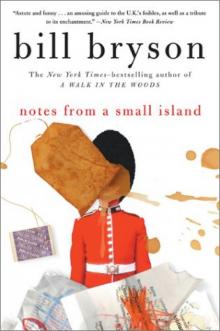 Notes from a Small Island
Notes from a Small Island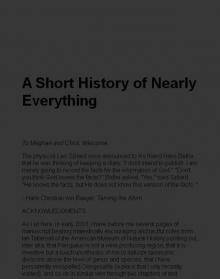 A Short History of Nearly Everything
A Short History of Nearly Everything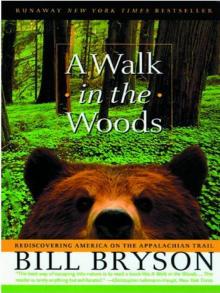 A Walk in the Woods
A Walk in the Woods I'm a Stranger Here Myself
I'm a Stranger Here Myself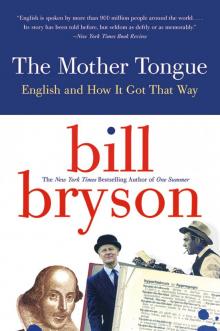 The Mother Tongue
The Mother Tongue Shakespeare
Shakespeare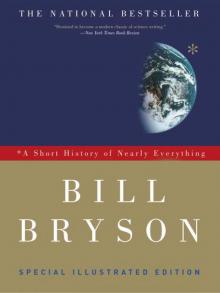 A Short History of Nearly Everything: Special Illustrated Edition
A Short History of Nearly Everything: Special Illustrated Edition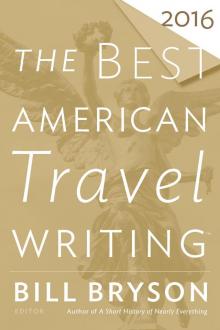 The Best American Travel Writing 2016
The Best American Travel Writing 2016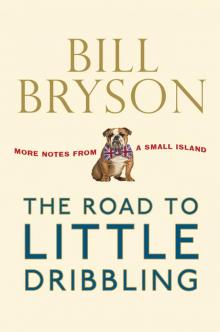 The Road to Little Dribbling
The Road to Little Dribbling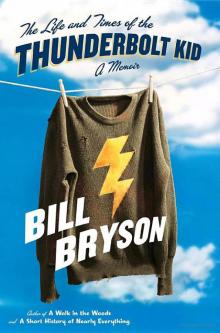 The Life And Times Of The Thunderbolt Kid: A Memoir (v5.0)
The Life And Times Of The Thunderbolt Kid: A Memoir (v5.0)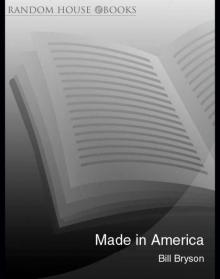 Made In America
Made In America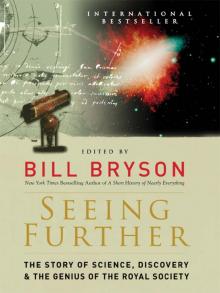 Seeing Further
Seeing Further Shakespeare: The World as Stage
Shakespeare: The World as Stage The Life and Times of the Thunderbolt Kid
The Life and Times of the Thunderbolt Kid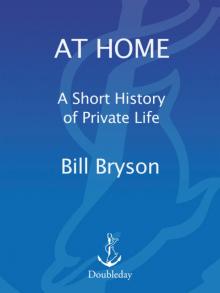 At Home
At Home Bryson's Dictionary For Writers And Editors (v5.0)
Bryson's Dictionary For Writers And Editors (v5.0) Neither Here Nor There
Neither Here Nor There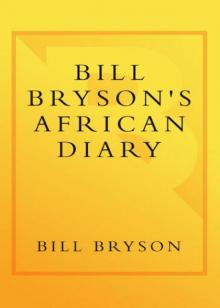 Bill Bryson's African Diary
Bill Bryson's African Diary